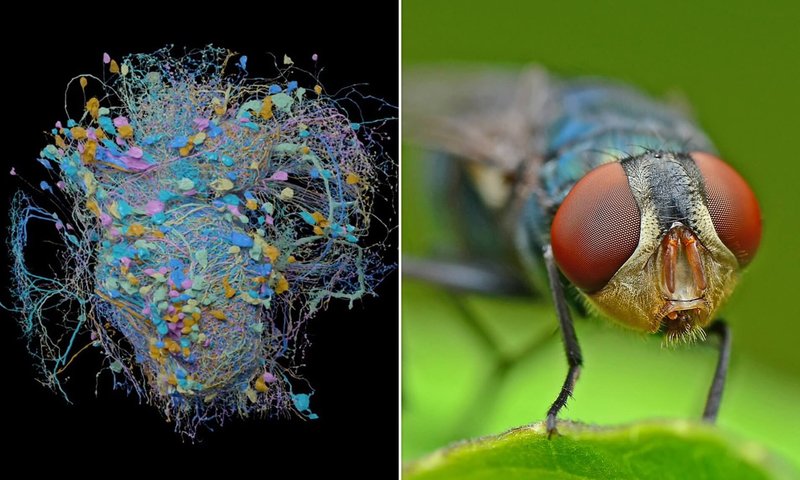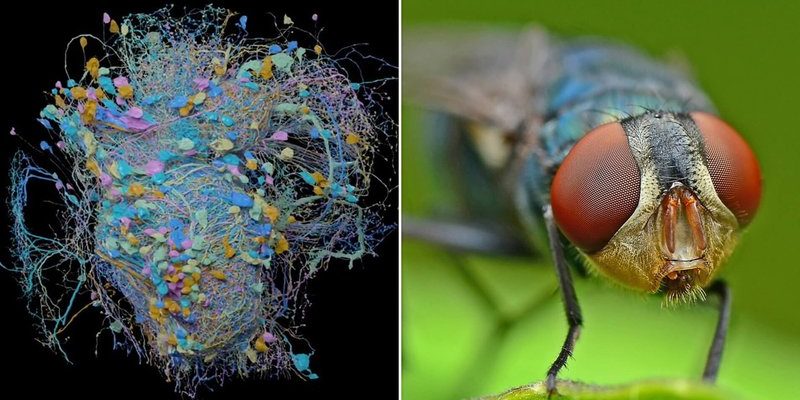
Imagine trying to figure out a complicated puzzle with just a few pieces—it’s a bit like what researchers do with fruit flies. They use these insects to understand everything from inherited traits to diseases. So, let’s dive into how fruit flies have made a splash in the world of science, and what makes them so special for researchers.
The Basics of Fruit Fly Research
The fruit fly, scientifically known as *Drosophila melanogaster*, is about the size of a dot on a piece of paper, but it packs a big punch in the scientific community. Why do scientists care so much about these tiny insects? Well, first off, they reproduce quickly—like, really quickly. A female fruit fly can lay hundreds of eggs in her short life. This rapid reproduction means that researchers can observe many generations in a short amount of time.
Here’s the thing: fruit flies share about 60% of their genes with humans. That’s wild, right? This similarity helps scientists study human diseases and genetic conditions using fruit flies as stand-ins. They can easily manipulate the flies’ genetics to see how changes can lead to certain traits or health issues. It’s a bit like having a mini human lab that fits on your kitchen counter!
Key Discoveries Made with Fruit Flies
Over the years, research on fruit flies has led to significant discoveries. One of the earliest breakthroughs was in the understanding of inheritance patterns. Scientists like Thomas Morgan used fruit flies in the early 1900s to show how traits are passed down through generations, helping to solidify the foundation of genetics.
Moreover, fruit flies have been crucial in studying mutations. By exposing these insects to radiation or chemicals, researchers can create mutations, allowing them to explore how specific changes in DNA affect characteristics. For example, a mutation can lead to changes in eye color or body structure. This kind of research can help scientists understand hereditary diseases in humans, such as cancer or cystic fibrosis.
Why Study Mutations?
By looking at how mutations affect fruit flies, scientists can learn about the role of specific genes. When they identify which genes are responsible for certain traits or diseases, they can work on developing treatments or cures for related conditions in humans. Basically, studying fruit flies can lead us closer to understanding our own DNA and health issues.
Fruit Flies and Neurobiology
You might be surprised to learn that fruit flies are also making waves in the field of neurobiology. Researchers have used these insects to study how the brain works, especially when it comes to behavior and learning. For instance, scientists can teach fruit flies to associate certain smells with food, allowing them to see how these tiny brains process and remember information.
Think about it: if a fly can learn to associate a smell with something tasty, that gives us insight into how learning and memory function in more complex organisms, including humans. This research has implications for understanding conditions like Alzheimer’s disease, where memory loss is a significant issue.
How They Study Behavior
To study the behavior of fruit flies, scientists create controlled environments to see how the insects react to various stimuli. They can observe how different genetic changes affect behavior—like how willing a fly is to explore new environments or respond to dangers. This straightforward setup provides essential data on how genetics influences behavior.
The Role of Technology in Fruit Fly Research
With advancements in technology, studying fruit flies has become even more exciting. Techniques like CRISPR-Cas9 allow scientists to edit genes with precision, making it easier to understand the effects of specific genetic changes. This gene-editing technology has opened up new avenues for investigating diseases, creating genetically modified fruit flies that can help model various health conditions.
Additionally, high-throughput screening methods enable researchers to analyze many flies at once. This helps them identify which genes or mutations may be linked to illnesses faster than ever before. It’s like having a supercharged lab that can churn out results at lightning speed!
How Technology Helps
By employing these technologies, researchers can save time and resources while still gaining valuable insights into genetics and health. This means the scientific community can move closer to solving complex issues faster, making a real difference in our understanding of biology.
The Future of Fruit Fly Research
As we look to the future, the study of fruit flies is likely to remain a cornerstone of genetic research. Their unique characteristics, including short life cycles and genetic similarities to humans, make them an ideal model for exploring not only genetics but also developmental biology and evolutionary studies.
Moreover, as new technologies emerge, the potential for discovering new applications and treatments for human diseases is vast. Researchers will continue to unlock the secrets of DNA through these tiny insects, bridging the gap between simple organisms and complex human biology.
Why It Matters
Understanding how genetics works in fruit flies can lead to breakthroughs in treating genetic disorders, advancing our knowledge in personalized medicine, and improving overall health outcomes. In essence, studying fruit flies isn’t just about understanding a small insect; it’s about unraveling the mysteries of life itself.
The fruit fly may be small, but its impact on scientific research has been enormous. From helping to illuminate the principles of genetics to paving the way for insights into human diseases, fruit flies have earned their place as valuable companions in the lab. So, the next time you swat away that pesky little fly, remember that it’s not just an annoyance—it’s a tiny hero in the quest for scientific knowledge. Who knew that something so small could contribute so much to our understanding of life, health, and everything in between?

